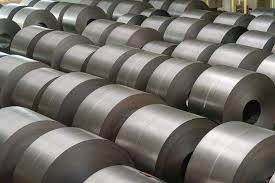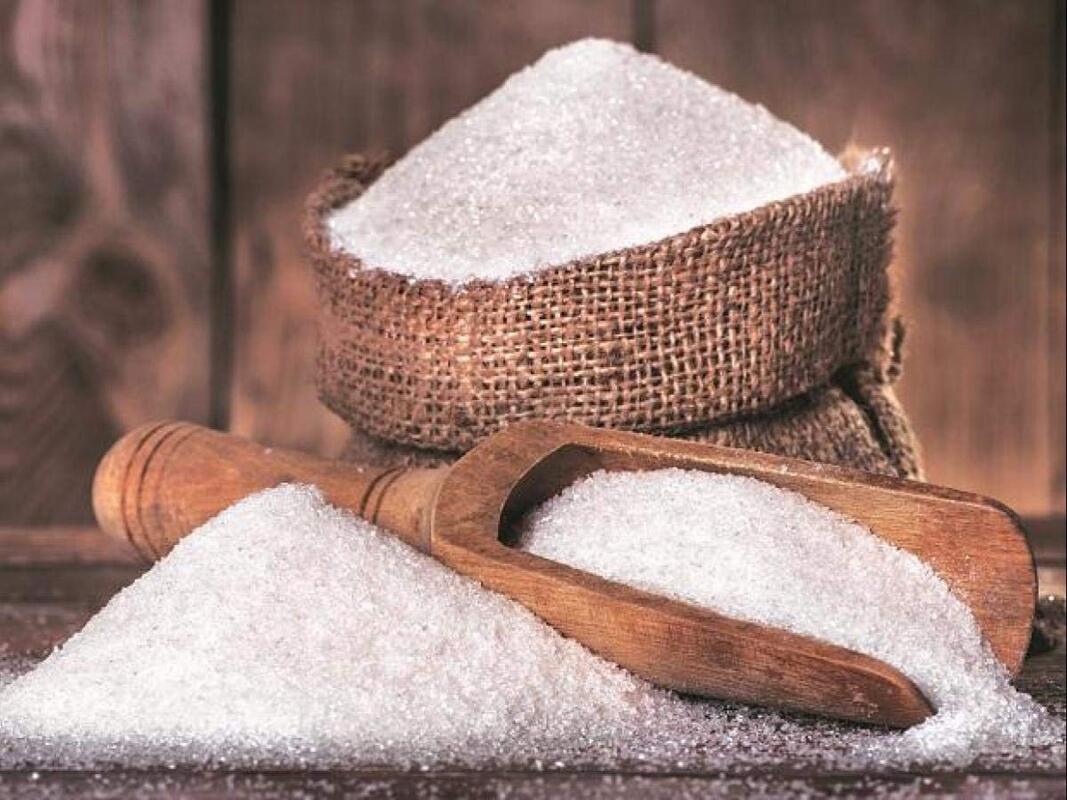|
Prices in the deferred contract months approached the $14/bushel benchmark. Meanwhile, in the crop progress report, the USDA decreased the weekly ratings for soybeans by 2%, with 58% of U.S. soybeans in good to excellent condition. Trade estimates had pegged the total between 59% and 62%. Heat stress continues to accelerate crop development above historical benchmarks. As of July 25, 76% of 2021 soybeans were blooming, up 13% from the week prior and 5% ahead of the five-year average. About 42% of soy plants were setting pods as of Sunday, which is a 19% weekly increase and 6% ahead of the five-year average. The falling condition rating, which is largely a result of the heat wave across the Upper Midwest last week, is not good news for farmers still hoping for average yields this year. Soybeans typically do not pollinate until early August so farmers are hoping that conditions improve before this critical reproductive stage. If conditions do improve, there is a higher chance of larger yields to market later this fall.
0 Comments
This week has been a week of blistering heat and dry weather but this hasn't derailed the pollination progress as silking rates increased 17% from the previous week to 79% complete as of July 25. About 18% of the nation’s corn crop has reached the dough phase of maturity, up 10% from the previous week and 1% ahead of the five-year average. However, it might be too early to gauge the impact of heat stress on the pollination process. The USDA report showed nationwide corn ratings 1% lower on the week to 64% good to excellent. The trade had expected this to fall between 64% and 66% good to excellent. Drought conditions continue in the Upper Midwest, Plains, and Pacific Northwest cand there are reports of short to very short soil moisture levels in the regions over the past week. While there have been scattered rain showers over the past week and this benefited some fields in the Midwest, many radar screens did not show true rainfall amounts. Its just too hot and there's not enough rain.
There is also news of another cold front heading towards the coffee growing regions toward the end of the week so this continues to provide volatility to the futures markets. It was a firmer day on the commodity markets in general yesterday and we saw the US Dollar lose ground to a basket of other currencies. A weaker US Dollar is seen to be a bullish factor for many of the US Dollar based commodity markets when trading in other currencies.
The Sugar, Cocoa, Coffee, Corn, Soybean, Silver, Platinum and Palladium markets ended the day on a positive note, while the Wheat and Gold markets ended the day on a softer note. The New York and London coffee markets were off to a positive start yesterday and were supported by the further news of another possible frost event in Brazil providing additional upside momentum following on from the rally last week. Both markets were seen to hit a resistance level during the early afternoon session as the markets dropped back from the highs made earlier in the day. Towards the close, the markets rallied again and both the New York and London coffee markets closed on a positive note. reaching the highest close in close to seven years.
This is following close on the heels of the water deficit, from which the crop has been recovering, but now it is suffering from low temperatures. However, more cautious agronomists are waiting a few days before making a more infomred decision on the actual impact of the frost. There are other experts saying that the sugarcane impacted by the frost needs to be harvested immediately so that it won’t lose quality. In Sao Paulo, following the frost damage, the sugarcane crops in Brazil will be further affected due to the new polar air mass that is set to move over the country’s agricultural areas this week. According to weather forecasters, thre is another wave of cold that will impact the crops in Brazil this winter, which is a rare situation and not seen in the country in decades. Brazil has already witnessed the worst drought in 90 years. If it turns out that the sugar crop fails because of the frost damage, the price curve for the 2022/2023 and 2023/2024 sugar futures markets in New York will increase. On teh demand side of the equation, we have numerous factors such as the recovery of the post-pandemic world economy, the increase in per capita sugar consumption in the main consuming countries, the resumption of the domestic consumption of fuel whose prediction is at 7%, and the energy policy in India focusing on ethanol production. All of these factors are driving demand upwards. With increasing demand and tightening supply, we have a recipe for higher prices and possibly a bull market. The March/August spread is now at a premium of 62.9 cents and this tells us that the market is under-supplied with high demand. Prices for natural gas are soaring across the globe as hot weather has people reaching for the air conditioners and cranking them up a notch. So the rally is primarly driven by the heat. Temperatures are expected to soar to 101 Fahrenheit (38 Celsius) in Dallas as soon as Monday, the National Weather Service said, breaking the 100-degree mark for the first time this year.
However, in the U.S., the rally is also underpinned by concern about a potential supply shortfall in the winter, when gas consumption peaks as homes and businesses turn up the heat. Natural gas stocks are already below nornal for this time of year and this comes at a time when we are seeing supply constraints. Exports are also contributing to tight gas supplies. In May, the U.S. shipments of liquefied natural gas (LNG) exceeded Australia’s for the first time ever as buyers around the world continued to purchase record amounts of LNGl. IN addtion, we also delvieries to Mexico from the U.S. via pipeline reach record highs in the following month. In the U.S. gas in underground storage is 6.2% below normal for the time of year, according to government data. The market is set to head into the winter with the least amount of gas in storage we've seen in many years. OPEC+ will schedule a new meeting, after the UAE successfully secured a higher production baseline. This baseline has been a bone of contention and really put the cat amongst the pigeons at last week's OPEC+ meeting. Getting past this conflict will allow OPEC+ to move forward with the planned production increases and restoring supplies in installments of 400,000 barrels a day through to late 2022.
Market demand is strong and can consume this increase in production. American crude inventories declined substantially again last week, according to an industry report published ahead of the Energy Information Administration (EIA) data that will be released on Wednesday. In fact, gasoline and diesel demad have returned to pre-pandemic levels. As the vaccine rollout progresses in the US and in Europe, with restrictions lifting and economies opening, we've seen oil rally more than 50% this year. Futures prices are showing a premium on nearer-term contracts, known as backwardation, which typically indicates tightness. Indeed, the International Energy Agency warned on Tuesday that the market will tighten significantly if the OPEC+ alliance doesn’t resolve the standoff. However, even if OPEC+ does resolve the conflict, the world is facing a growing threat from the spread of the Delta coronavirus variant. Indonesia posted a record number of positive cases, and in the UK, cases are soaring, while Sydney extended a lockdown. The American Petroleum Institute said crude inventories slid by more than 4 million barrels last week. The Energy Information Administration is expected to report a similar reduction later on Wednesday, according to a Bloomberg survey. That would be an eighth straight weekly draw, the longest run of declines since January 2018 and a very clear indication of strong demand as the recovery build momentum.  Shanghai steel futures extended gains to hit an eight-week high on Monday. Rebar and hot rolled coil both hit peaks last seen on May 19, when the market last spiked only to crash after dire warnings from Beijing about speculative activity and the threat of action against excessive rises in commodity prices. Beijing’s pressure to curb excess production capacity as part of wider environmental targets raises the prospect of material shortages in the face of still robust demand. Late last week, the People’s Bank of China announced it would cut the bank’s reserve requirement ratio by 50 basis points, effective from July 15. It would release around 1 trillion yuan to underpin an economic recovery that Nasdaq reports is starting to lose momentum.
The move supported further price rises. However, in reality, it would take months for the PBOC’s relaxation of reserve requirements to filter though into any increase in construction activity and, hence, demand. Steel Production According to the World Steel Association, global crude steel production increased by 14.5% year over year for the first five months of 2021. North American steel production rose by 11.3% during that period, with a sharp 47.7% increase in May alone. For the week of July 3, the American Iron and Steel Institute reported that domestic raw steel production totaled 1,842,000 net tons. The capability utilization rate reached 83.0%. There has been a slow but continuous increase since the week of Jan. 2, when the institute reported steel production was 1,650,000 net tons at a capability utilization rate of 74.6%. Despite this increase, all forms of steel prices remain at an all-time high. U.S. Imports The latest data from the Steel Import Monitoring and Analysis (SIMA) showed steel import permit applications for June increased by 12.4% compared to the previous month. Imports totaled 2,965,000 net tons. Import permit tonnage for finished steel in June increased by 6.8% month over month to 1,982,000 net tons. OPEC and its allies have been unable to agree on a supply increase, creating volatility in the market and pushing crude to its first weekly loss since May last week. Fuel consumption in economies such as the U.S. and China has boosted oil prices this year amid tight global supplies. China’s slowing economic recovery and the spread of the delta variant may threaten the global demand for oil and the commodity’s trajectory so far this year.
The economic data in China is startening to soften. Economists see China’s growth as easing in the second quarter to around 8% which is in contrast to the record gain of 18.3% in teh first quarter. In addition, retail sales and industrial production are expected to moderate, too. With these factors and the delta variant spreading exponentially, there is going to be more uncertainty about the demand recovery. OPEC+ abandoned meetings last week after a dispute between members over production cuts, and one week later, no deal is in sight. This is causing more uncertainty about oil supply to the market. The International Energy Agency will release its monthly report on Tuesday and OPEC will release its own monthly report on Thursday. This harvest is made up of around 16 million bags of conilon robusta coffee, and approximately 14 million bags of arabica coffee. The U.S. National Weather Service’s Climate Prediction Centre has revised the earlier El Niño La Niña Southern Oscillation (ENSO) neutral outlook, and is now forecasting that there is a 66% chance for a La Niña phenomenon to develop later this year. The La Niña weather phenomenon historically brings with it excessive rains for the Pacific Rim countries. What does this mena for coffee? Excessive rains will have an impact upon the climatic conditions within Colombia, Indonesia and Peru, while it can also influence dry conditions for the arabica coffee districts in South East Brazil. If the La Niña phenomenon plays out, there will be concerns over excessive rain damage for the coffee crops in Colombia, Peru and Indonesia. It will also bring concerns about the threat of drought damage for the next 2022 Brazil crop. The September-to-September contract arbitrage between the London and New York markets widened yesterday to register this at 74.82 usc/Lb. This equates to 49.14% price discount for the London Robusta coffee market. This wide arbitrage will likely be viewed by price sensitive roasters as an attractive alternative discount for robusta against the comparatively higher value arabica coffee. It was a mixed day on the commodity markets yesterday, as we saw a stronger dollar pressuring the commodities. The Coffee markets ended the day on a positive note, while other commodities such as Sugar, Cocoa, Corn, Wheat, Soybean, Gold, Silver, Palladium and Platinum markets ended the day on a softer note. The main highlights from the ECB's strategy review:
|
AuthorTim the trader Archives
January 2025
Categories |
Site powered by Weebly. Managed by iPage








 RSS Feed
RSS Feed